By Andrew Cleary
POTUS had flown under cover of night. It was December 2018 and, after weeks of detailed preparations conducted under extreme secrecy, Air Force One was finally in the air and carrying the Commander-In-Chief to a secret Christmas dinner with US troops based in Iraq. In addition to the press blackout and the furtive late night departure, the Secret Service had also modified the call sign of Air Force One from the standard AF1 to RCH358 which was reserved for more commonplace cargo flights. Once the Boeing 747-200 was safely airborne and heading East at 31,000, the Secret Service presumably breathed a collective sigh of relief and congratulated themselves that the clandestine operation was off to a good start. However, by the time the wheels of Air Force One touched down in Iraq 14 hours later, the entire world already knew their closely guarded secret.
While it was true that there had always been a certain group who tended to look heavenward for POTUS’s coming, the actual truth behind his high altitude discovery was quickly traced to a more mortally-coiled man living in Sheffield, England. He was neither a presidential acolyte nor a member of any rogue intelligence agency, but simply an ordinary man with a less than ordinary hobby of Plane Spotting. Although POTUS had stylized himself as a modern day Apollo blazing his way across the stratosphere five miles above the heads of mortal men, the contrails of his chariot were still very clearly visible to any of the common folk below who cared to simply look up. And as he presumably did in many other similar sightings, our ‘Man in Sheffield’ zoomed in with his telephonic camera lens and snapped a photo which revealed that particular plane’s uniquely distinctive and famous coloration. Within the first few minutes of posting his surprising discovery online, the photo began to circulate rapidly around plane spotting ‘Twitter’ feeds resulting in a full court press to monitor air traffic control tower chatter across England and to query the flight’s call-sign discrepancies. For it is generally known in certain circles that the skies of the eastern border of the Atlantic Ocean are closely watched by a rag tag battalion of plane spotters, and it wasn’t long before the Secret Service’s carefully concealed dots were quickly connected and victoriously hoisted high for all the world to see.
The passion that motivates this ardent group of plane spotters is perhaps rivaled only by the Game of Thrones ‘Night Watch’ charged with guarding the Seven Kingdoms of Westeros. I know this because I had been one of them in the late 1970’s (a plane spotter that is, not a Night-Watchman), and as a 7-year old boy growing up in Dublin it was an experience which profoundly inspired my life.
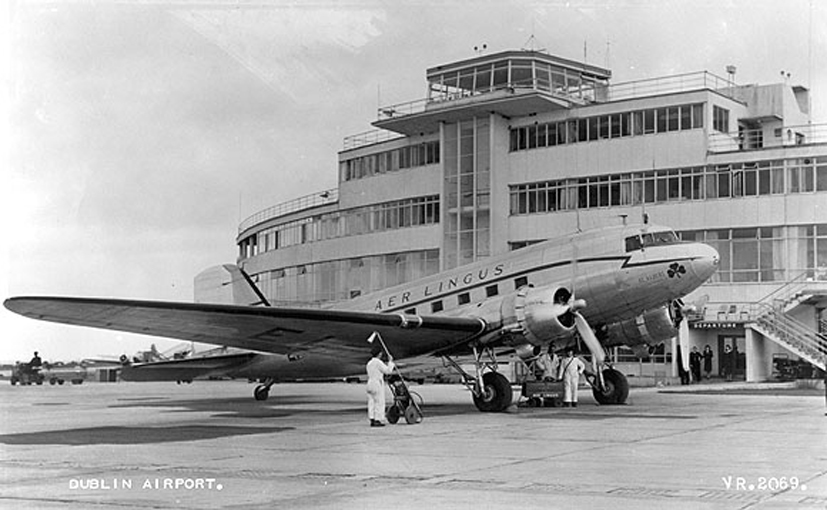
Looking back these many years later, parental love in late 1970’s Ireland seemed to have been predicated on what can only now be understood as general encouragement of free and far ranging independence guided solely by a strict adherence to Friedrich Nietzsche’s mantra of ‘What doesn’t kill you only makes you stronger’. Therefore, when presented with her 7-year old son’s request that I be allowed to hop on a city bus that would take me miles away to an international airport so that I could wander around among transient strangers completely unchaperoned and unsupervised with my friends, my mother simply placed me in the hands of Our Lord, handed me bus fare and a pocketful of raisins, and sent me on my way.
For the most part, our usual arrival sequence at the airport was typical enough. We often travelled as a group and caught the CIE 41A double decker bus that took us directly to the front door of the airport terminal. We always made straight for the front seats on the bus’s upper deck. While the elevated view was fun, the older buses tended to sway considerably from side to side and were usually filled with cigarette smoke, leaving us all green with motion sickness by the time we arrived at the airport. We sometimes had to gamble on taking the 41B bus which didn’t turn into the airport at all but instead dropped us off a mile from the terminal. However, in those years immediately following the OPEC oil embargo and the subsequent fuel shortages, we knew better than to place any faith in the efficiency of public transportation and the mile walk to the terminal was infinitely better than taking a chance that the next bus was close behind.
In those days, the general ambiance of Dublin Airport was not dissimilar to other international airports insofar as air travel was still considered a very civilized undertaking. With relatively few exceptions, international travelers always dressed elegantly, were rarely ever asked to remove their shoes for inspection before boarding, and did not consider attacking flight attendants as a viable response to….well, anything. Therefore, a raised eyebrow of disapproval by one such traveler could perhaps be understood upon encountering our feral pack of young boys wandering around Dublin Airport’s terminal with nary a boarding pass between us. Yet, had our erstwhile traveler lingered a moment longer to conduct a more detailed observation, a quick survey of the ‘tools of our trade’ would have left no doubt that none of us was without committed and passionate purpose.
The requisite entry level equipment to the hobby included a pair of high-powered binoculars that each of us slung around his neck and synchronized with hair-trigger like reflexes to jump into immediate surveillance action at a moment’s notice. A few of us also owned small transistor radios which were perpetually tuned to the airport’s Air Traffic Control tower’s frequency. More advanced spotters carried the plane spotters Bible- ‘Civil Aircraft Markings’ (CAM) an annual publication of each and every international airliner to fly into the UK and Ireland, and within these we fastidiously underlined every plane we had ever seen. The highest echelons of spotter also lugged around ‘World Airline Fleets’ (WAF), a massive tome of cataloging achievement which included every commercial plane that existed throughout the world. However, WAF was almost 5 times thicker than CAM, impossible to find, and then absurdly expensive. I had only ever seen 2 actual copies, and it was generally accepted that whoever was in possession of this sacred text was automatically unassailable in any argument.
The endgame of all of this activity was our master log books which were highly personalized and oftentimes incredibly detailed affairs of our own design. These were as sacred to us as the Book of Kells was to the Four Masters. While we would never take these outside of the walls of our own homes for fear of losing them, everyone knew the contents of each other’s intimately since each entry was discussed at length. Into these we would painstakingly transcribe the three critical elements of our daily sightings: Type of aircraft, airline, and aircraft registration number, and it was the search for new and increasingly more exotic sightings which kept us looking skyward week after week.
My first few weeks as a 7-year old fledgling plane spotter resembled nothing short of wide-eyed wonder. Everything that was capable of powered flight was new to me and I couldn’t learn, discover, and write down registrations fast enough. Dublin Airport, while no-where near the enormous scale of Chicago’s O’Hare or New York’s JFK airports, was nevertheless still an international touch point and therefore attracted all manner of exotic plumage from around the world. The 1970’s in particular was also a unique point in time during which the age of the classic European turbo-prop airliners, while waning, was still very much on display.
Furthermore, the geographic location of Dublin at the edge of the Atlantic attracted at wide range of international flights spring-boarding onto or alighting from the transatlantic hop. Therefore, upon arrival at the airport on any given day, I was immediately absorbed into the multi-layered intersections of many different and varied worlds: Airlines from countries of which I had never heard, planes from bygone eras of which I had yet to learn, passengers from cultures of which I had never seen. There were elegant British Airways Vickers Viscount turboprops from the 1940’s, mid-century modern Dutch Sterling SE 210 Caravelles from the 1950’s, and ultra-chic Pan Am Boeing 707’s from the 1960’s, all standard fare laid up against more modern day Boeing 727’s from Spain, Illushyn-62’s from Poland, and Tupolov 154’s from behind the Iron Curtain.
And the airlines from every nation were just as intoxicating, each with its country’s national pride emblazoned colorfully across each plane’s tail like pennants dancing in the wind to announce the arrival of a visiting diplomatic delegation. American TWA’s ‘Twin Globes’ would often be parked directly alongside Communist Aeroflot’s winged ‘Hammer and Sickle’ while Swissair’s austere ‘Red Cross’ looked very proper next to Alitalia’s highly stylized ‘A’, each a ship hove-to after its long voyage and dutifully sharing moorings within the protected confines of the bustling international harbour.
As my 7 year-old eyes absorbed all of these in unfiltered innocence and wonder, each plane quickly became not just a machine that ferried passengers across borders and oceans, but an almost living expression of all manner of cultural, political, and social narratives from around the world. Every one of those planes had a story to tell, each had a personality to express, each had a soul that reached out to touch mine. But it didn’t take long for our admittedly quite young yet industrious group to memorize the scheduled routines of international arrivals and departures, and before long we had targeted, captured, and catalogued the majority of the ‘regulars’. Which, given the limitless imaginations of boys in that idyllic time before iPhones, still left a tantalizing amount of undiscovered territory to be explored.
Upon arrival at the terminal, standard protocol was usually to check in and kiss the ring of the ‘Tony Soprano’ of plane spotting. While I never learned his actual name, he was an older boy of about 15 or 16 years’ old who had long hair, wore a denim jacket, and exuded a savant-like aura of infinite wisdom about all things aviation. He could usually be found comfortably ensconced in the airport’s ‘viewing lounge’ like a Merovingian king holding court and surrounded by a few of his trusted confidants. He could always be relied upon for a real time summary of which planes were currently hidden in various pockets around the airport as well as which flights of interest were expected later in the day. This proprietary knowledge was enabled by his ownership two items: One was his transistor radio to which he ceaselessly listened as the airport’s air traffic controllers managed incoming arrivals. The second was his prized copy of ‘WAF’ which he somberly consulted on occasion to settle any queries or disputes that we brought to his attention.
And he clearly enjoyed his authority, dispensing prognostications, opinions, and judgments in the course of ruling his fiefdom with an iron fist. He was quick to banish anyone found guilty of ‘fudging’, the cardinal sin of plane spotting that involved fabricating or falsifying a sighting. Once someone was branded a ‘fudger’ by him, he could never again be taken seriously as a plane spotter. He once eviscerated one of our group (admittedly already a suspected ‘super-fudger’) with the pronouncement that his suspicious sighting of a certain Boeing 747 the previous week at Shannon Airport was simply impossible since he knew that that particular plane had been on lease to British Caledonian and had been flying cargo routes over the South China Sea for the past 3 years.
As for myself, I had been lucky enough to gain his approval early on by presenting him with a magazine of vintage aircraft that I happened to buy completely at random at the airport newsagents some days before. As he perused each photograph of rare aircraft the likes of which I had never seen, he suddenly paused theatrically on a beautifully restored World War-II era P-51 Mustang fighter, sighed wistfully as he slowly tapped the page in deep and discerning adulation, and suggested to me in a professorial tone that “You need to cut this out, frame it, and hang it in a place of honor on your wall this very evening”. And while I remember thinking to myself that I was in no way willing to replace my poster of ‘The Six Million Dollar Man’ that already occupied that prized position, I nevertheless nodded sagely and confided to him that I felt exactly the same as he did and that I would start looking into suitable framing shops right away.
While the ‘viewing lounge’ was presumably the airport management’s attempt to focus and thereby control the prying eyes of curious observers, they had clearly failed to consider the innovative spirit of discovery that dwells deep within the hearts of all unsupervised 7-year old boys. So it came to be that, like rabbits on the Spring-fresh meadow, we explored, probed, and infiltrated every square inch of that airport with unbridled abandon in the search for planes hidden in its less than accessible corners.
Our sacred space was, of course, ‘The Link’. This part of the airport served quite literally as our back-door connection to the top shelf of exotic flying machines. It was a long and narrow appendage that connected the new 1972 ‘Brutalist’ styled concrete terminal to the original 1930’s building which was a beautifully detailed Art Deco remnant of the golden age of air travel. The Beatles had arrived into the original terminal in 1963 and were welcomed by thousands of screaming Irish lasses. Pope John Paul II had arrived into the new terminal in 1979 and received a slightly more gender balanced but similarly adoring welcome. However, since the original building was smaller and now unable to address the much larger volume of modern air travel’s demand, it had largely been converted to administration and was closed to the public. To punctuate this point, a large and terrifying sign had been posted prominently across the door to the link that sternly stated ‘unauthorized access forbidden’ beyond that point and threatened immediate prosecution to anyone foolhardy enough to not take notice. However, it was well known within our feral brotherhood of wandering orphan chimney sweeps that the most exotic and specialized aircraft were always parked on the apron of the original terminal which was hidden from any public vantage point. Therefore, we would furtively hover in close proximity to the door until receiving the ‘all clear’ sign from a well-placed lookout scouting for airport security which freed us to scuttle unseen through the forbidden door, across the mystical bridge, and into the promised land.
Once there, the link never failed to yield a treasure trove of rare gems since that part of the airport catered to arrivals requiring either discretion or special accommodations. It was down in that quiet space that we found an ever revolving cast of hallowed, classic turboprops from bygone eras, such as a Norwegian 1955 Convair CV-440, a British 1950 De Havilland DH 114 Heron, and an American 1957 Lockheed L-188C Electra reputedly flown by a tele-evangelist from Florida. We once saw a beautifully sleek 1966 Gulfstream II owned by ‘Fabergé’ parked alongside a French 1955 Fokker F-27, about which we learned only days later had tragically crashed into a cloud shrouded mountaintop in the Alps. On another day we saw a 1959 Armstrong Whitworth AW 660 Argosy which was perhaps the most improbable of any flying machine ever designed owing to its enormously bulbous nose, reminiscent of the basal knob on a male goose during mating season, which swung completely open from the front to devour its cargo whole.
Once we had plundered the hidden riches of the link, we called in on the various airlines’ information desks back in the terminal hall to ask- with feigned childlike innocence- for “information”. This usually led to an exasperated exchange with the elegantly dressed steward or stewardess on duty that day until it became clear that we were just after whatever promotional ‘swag’ they had on hand that week. These generally were postcards and brochures showcasing that airline’s fleet of modern aircraft arriving at exotic ports of call around the world. We would fastidiously paste these into our scrapbooks while imagining the backstory behind each image, such as what it must be like to fly a Delta Airlines Lockheed L-1011 Tristar into improbable places like Dallas, Texas which was rumored to have real life cowboys, 12 lane super-highways, and a scandalous TV show named after it. Sometimes a kindly hostess would unload data rich international ‘schedules’ on us which initially seemed like a treasure trove until we eventually came to realize that we really couldn’t care less about the arrival time of Lufthansa’s bi-weekly flight from Munich to Minsk if we weren’t actually there to see it. As we busied ourselves bouncing from desk to desk, I would discretely help myself to piles of airline baggage stickers from the check-in counters which I would later use to ‘sticker’ the covers of my school notebooks for many years to come.
Our next ‘undiscovered country’ was invariably the aircraft hangars. Dublin Airport was a hub for international aircraft maintenance contracts, so the exotic type of planes the hangars contained within these was definitely a wild card. Always a resourceful group, we worked hard to cultivate a network of contacts on the inside to gain access. The housekeeper’s boyfriend of one friend was an aviation engineer who once took us inside of Aer Lingus’s flagship Boeing 747-100 that was being overhauled in several pieces across the hanger floor. I remember us all racing down the plane’s empty aisles and climbing the spiral staircase up into the first class lounge in ‘the bump’, each of us dreaming of a day when we all could be fortunate enough to actually fly in such elegance. Another friend’s father was also an engineer who invited us in to climb into a pair of vintage North American 1941 B-25N Mitchell bombers that were being lovingly restored. These were the workhorses of the early American bombing raids in WWII and once the engines were started the noise could be heard at least 10 miles away; it scared the life out of us and we could imagine the fear that the sound of an incoming bombing raid must have caused during the war.
However, access to the hangars was much more secure than the unguarded link door, so when our inside connections went dark we frequently found ourselves hiking the few miles around the airport’s perimeter fence of the airport to a farmer’s field from where we would use our binoculars to peer into the hangars if the huge doors were open. In those days the airport was surrounded mainly by farmland, and it was not uncommon for us to be sharing one of our strategic observation posts with a few dozen curious cows who didn’t appear quite as excited as we were about whatever plane we could make out inside.
We once saw an ultra-classic 1943 Lockheed L-1049 Constellation that The Rolling Stones had used as their tour plane during the ‘70’s. With its iconic triple tail and sleek dolphin shaped fuselage, the Constellation was arguably one of the most elegant planes ever to fly, and we were all personally offended when it was eventually moved outside the hangers and abandoned to languish alone in the rain for several months. We eventually came to suspect that Keith Richards must have simply forgotten where he parked it.
For whatever reason, the back of the hangers also catered to a surprising number of other classic aircraft, especially Douglas DC-3’s: One of the original DC-3’s built in 1936 for United Airlines spent some time there being rehabilitated to serve out its golden years in operation for ‘The Science Museum. An Irish cargo start-up named Clyden Airways often used the hangers to stage its entire fleet (Total: 2) of beautiful DC-3’s, and a military conversion of a DC-3- the Douglas C-47 Skytrain- owned by the French Navy once made an appearance.
We also used to see many more modern planes there, especially several Zambia Airways Boeing 707-351C’s which would fly in for occasional maintenance. We were always enamored when imagining the exotic place in Africa from which those green and orange tails had originated, oblivious to the Rhodesian air strikes that slaughtered refugees that had camped just outside of Lusaka during those very same years.
The cows also shared their field with an old concrete WWII ‘pillbox’ which had been built just ahead of one of the runways’ landing aprons. On various occasions we would all clamber on top of this and gleefully jump up and down while waving white flags of surrender to the weary Communist pilots of arriving Aeroflot Tupolov 154’s that passed just a few meters above our heads as they touched down from far distant Moscow, Stalingrad, or Odessa. It was still many years before the iron curtain would fall.
If the weather was clear, we would sometimes set up our base of operations in the field itself. From there we could tune into the control tower with our transistor radios and map out the afternoon’s arrivals. This also allowed us to keep an eye out for high altitude ‘flyovers’, flights overshooting Dublin but who would check in with Dublin’s ATC tower as they did so. Although often flying above 30,000 feet, these were nevertheless still very visible due to the contrail clouds condensing behind, and our binoculars were powerful enough to allow us to make out the type of plane and airline. However, we relied on tuning into the exchange between the pilot and Air Traffic Control tower for the plane’s registration, without which the sighting was invalid. In this manner we gained exposure to a completely new tier of exotic aircraft and airlines, none of which would ever visit our small corner of the world: Rare sightings such as a Pan Am Boeing 747-SP (Special Production), a Thai Airway’s McDonnell Douglas DC-10, and what we considered the ‘Princess of the Skies’- an Eastern Airline’s Lockheed’s L-1011 Tristar, all the first generation of commercial wide-bodies that were built to fly non-stop from the US to the Middle East, unfortunately enabling them to bypass a stop into Dublin.
In this same manner we also tracked American military cargo flights, such as Lockheed C-141 Star-lifters, C-130 Hercules, and the legendary Lockheed C5 Galaxies. At that time, the C5 was the undisputed largest plane in the sky, unbelievably huge since it had been designed to carry multiple tanks, helicopters, and other similarly oversized military equipment throughout the world. Its nickname used by military maintenance crews was rumored to be “FRED” (Fucking Ridiculous, Economic/Environmental Disaster). Ironically, my first sighting of a C5 was not a typical high altitude flyover, but one morning during takeoff after a rare overnight visit to Dublin. I can still remember a group of us playing football in our park when we heard something terrifying approaching; the deeply tortured and grinding whine produced by the torque of (4) huge General Electric CF6-80 C2 turbofan engines straining to lift 460 tonnes of weight in exactly the opposite direction that God intended when He first drafted the laws of gravity. The sound was unlike any other, and since none of the airport’s usual flight paths passed over our neighbourhood, we were understandably terrified as we listened to the advance of what we imagined could only be the demonic harbinger of doom we had been warned about in Church: An unseen shrieking horseman of the apocalypse wailing as it was summoned from the darkest edges of judgement to bear down upon us, rattling windows and sending children, cows, and clergy running for cover.
We suddenly beheld the monster as it banked over the nearby fields, casting a blood red shadow as it eclipsed the sun and advanced toward us in haloed silhouette. It could barely clear treetops as it labored under the full weight of whatever bellicose cargo filled its swollen belly, clawing against the air for every precious inch of vertical gain. As it passed just above us, time slowed almost to a stop and this immense and furious knot of gravity-defying metal just seemed to hang there, almost floating, mesmerizing as the shattering and deafening cloud of sound it pushed out in front of its advance swept over us, our faces rigidly fixed heavenward in awe and terror and testimony to what we all imagined could only be the breaking of the Seven Seals and the coming of the end of days.
In time, I grew to listen for the deep groaning torque of aircraft straining as they climbed into the heavens, and I learned how to differentiate different types of aircraft by the sound signature of their engines. The sound of the (4) Rolls Royce turboprops of a 1948 Vickers Viscount was unmistakable. But the hometown favorite was Aer Lingus’s sole Boeing 747-100 – registration EI-ASI – which sounded not unlike the C5. We saw it often during our regular visits to the airport, and we had once clambered all over, under, and through it on one of our visits the hangers. But we heard it even more frequently during its evening take offs, the unmistakable groan of its 4 massive Pratt & Whitney JT9D high-bypass turbofan engines carried by the wind across the miles that separated us from the airport. It was based out of Dublin and it soon became like an old friend as we would hear it coming and going several times a week. However, my most vivid and poignant of it was while I was visiting my Grandparent’s farm on the West coast of Ireland in County Clare:
It was one of those simple, sublime summer days that can only be experienced on an Irish farm. The earthy-sweet smell of freshly cut hay, fragrant under a clear sky. Deep shades of emerald green dappled across the pastoral patchwork of fields that rolled quietly down to the shore of nearby Lough Derg, while the thousand-year old monastic round-tower was just barely visible as it rose serenely from Holy Island. Moylussa Mountain, the highest peak in Clare, watched stoically from a distance as the sound of a dog’s bark from a mile away carried clear across the fields, as did the occasional, rambling calls of a solitary thrush. The ancient stillness of the morning warmed unhurriedly.
The cut hay had been aligned in long parallel rows and I had been working my way down each row with a pitchfork the way my Mother had taught me, quietly turning it toward the sun to dry before it could be collected into haystacks. Later that month families from adjoining farms would come to help my grandparents’ family load a horse drawn cart to carry the hay to the haggard, breaking on the long meadow for picnic lunches of rhubarb tarts, ham sandwiches, and tea that my Grandmother would make. One of my only memories of my grandfather was his teaching me how to fashion a ‘súgán’ rope woven from straw used to tie down the hay on the rick that would hold it in place to feed the livestock throughout the winter. Dinner later that evening would be after the 6pm Angelus and cooked over an open-hearth fire, the smell of smoldering turf coaxing centuries-old shared memories awake, a fox barking in a nearby field as the hens slept safely in the henhouse, the heavy-still quiet of the moonlit landscape wrapping close as a blanket against the chill night air. As my Mother mused years later, it was a lifestyle that that had endured for centuries and passed down through generations, having been woven through the years into the fabric of traditional rural life in Ireland.
However, as I worked my pitchfork on that particular day, a familiar sound called out to me across the fields. Shannon Airport was at least 30 miles away, but that day must have been reserved for a new pilot’s flight time training on EI-ASI, and it circled a new flight path over our heads once every 20 minutes for the entire morning, touching down and taking off, each time that familiar sound of heavy groaning torque washing over the landscape before it appeared over my head, circling again and again in the clear blue sky. I felt as if it was just me and that enormous friend of mine sharing a morning we had all to ourselves. But it was also prophetic, and while I didn’t realize it then, in that one morning I was a child straddling between a time of ancient cultural tradition and the inevitable arrival of a more modern age. Perhaps there were some older than me at that very same moment who looked up and cursed that circling symbol of progress. Perhaps there were others who welcomed the day to be done with the backbreaking work on a farm. In any event, those were some of the last days of a traditional Irish farming tradition that had cared for the land that had been fought for and loved by generations past. And without me knowing, my circling friend was announcing the inevitable demise of that tradition, chasing away the shy and gentle faeries of Yeat’s poetry and replacing the lyrical storytellers of ancient myths with the groaning of metal. Iccarus forever straining toward the sun.
But there were also those other days when it seemed that a sublime radiance shone down upon us from that same sun. Perhaps the rarest visitor to ever land in Dublin was a Lockheed L-1011 TriStar. While we had all seen Tristars flying overhead at 30,000 sf, none of us had ever hoped to see one up close since their typical routes were the non-stop long-hauls from the US to Asia, bypassing Dublin. That all changed one cloudy afternoon when ‘The Merovingian’ picked up the first hint of an approaching TriStar on his transistor radio. He was forever tuned into the airport’s control tower frequency EIDW 118.600 and we all soon knew it was coming almost an hour before it’s actual arrival. Within minutes of the first verified confirmation, we are all huddled around his radio listening intently to the crackling exchange between pilot and the airport’s Air Traffic Control tower. That hypnotic waltz of technical negotiation that had begun somewhere out over the Irish Sea, as “Speedbird-Golf-Bravo” glided ever closer. A clipped and monotone exchange as altitude was established, vectors adjusted, airspeed verified, bearings repeated and confirmed. Standard protocols that had been rehearsed endlessly over years of professional training now unfolded with a confidant cadence that resulted in the finalization of a glide path approach from the South-Southeast toward Dublin Airport’s runway approach 121.
At least two dozen of us now silently scoured the grey Irish sky with our binoculars, each of us wanting to be the first to bear witness to this life changing event that we knew was quickly approaching. We had all conspired to sneak into the prohibited ‘Link’ since it afforded the best view of approaching aircraft on that particular runway, and we were now quietly packed into a small room facing the runway, deathly afraid that we’d be discovered by airport security before the moment arrived. Confirmation of vertical path intercept suddenly crackled over the Merovingian’s transistor radio to break the silence, and then we all saw it, still a few miles out but the undeniable twinkling of landing lights descending messianically from Dublin’s misty cloud cover, gliding across the distant ALS lighting array, held aloft as if by Angel’s wings as it floated down almost weightlessly over the landing threshold.
Nose up and flaps down, the TriStar’s main undercarriage touched down several hundred yards away, a brief puff of smoke as the friction of rubber wheels ever so gently kissed concrete. We watched with as much the same reverence as we would watch a swan alighting gracefully on a lake, and just before it disappeared out of our view at the end of the runway, we heard the reverse thrust of its engines fire to complete its deceleration. And then seconds later, it disappeared behind out of sight behind the hangers. We agreed that it was most likely heading for maintenance within the hangers since that was the typical reason behind such unscheduled visits. But we had seen it: A Tristar up close instead of the usual high altitude flyover 5 miles high, a rare and wonderful experience that we each began to fold neatly into the safe keeping of our inner hearts where special moments are guarded for a lifetime.
As we were packing up and the excitement started to wane, the next moment dropped upon us instantly and indelibly. It was as if a single beat from an enormous bass drum thundered throughout the space and reverberated indefinitely, stopping time. I’m not sure who saw it first, but it didn’t really matter as the front of the Tristar suddenly emerged from around the corner not more than 50 feet away, impossibly present as it tore the fabric of our reality in two and flooded our young souls instantly and absolutely. There wasn’t room for surprise or any exclamation in that frozen moment, just a stunned and utterly incapacitating awe as the aircraft slowly rolled more fully into view, taxied closer as it loomed even larger, and finally came to a stop directly facing us, almost close enough to touch were it not for the glass. It was there; just… right… there… on the other side the glass. Not living, but more alive and sublimely beautiful to each of us than anything our 7-year old eyes had ever beheld. None of us moved, what our eyes saw becoming almost irrelevant, displaced by the enormity of that one moment which shattered our senses completely with the efficacy of a lightning bolt, leaving us with no meaningful response other than aorta-splitting reverence and utter and hopeless wonderment.
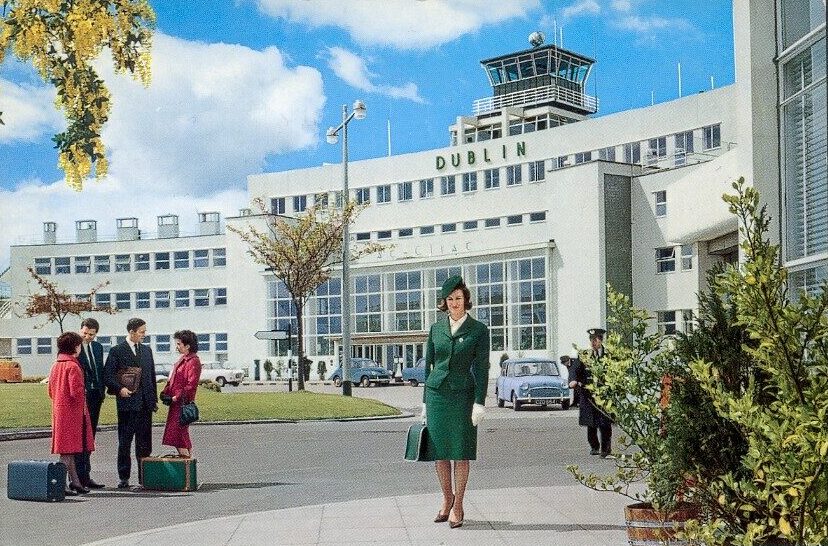
Looking back now on that time, the impact upon our early lives by what we experienced during those few years was much more than had to do with just planes. It is perhaps true that I was not able to understand it all then, but bearing witness to the arrivals and departures of all those exotic ships and passengers from distant countries opened doors within my mind and stirred longings for whatever it was that was just over the horizon, until everything that had once seemed familiar could never again look the same. Later in life now, I sometimes find my mind drifting back to that place and time: To slip unseen once again into those small hidden places where I can sit quietly and peer out upon the rich, roiling pageant of all those wondrous and colorful ships waiting patiently in the soft grey Irish rain for the crowds of hurrying passengers they gather up and carry above the clouds to all of those faraway and surely magical places that I long to visit.
And to close my eyes just one more time… and dream about all that can ever possibly be.
Our thanks to Andrew Cleary, the author of this story.


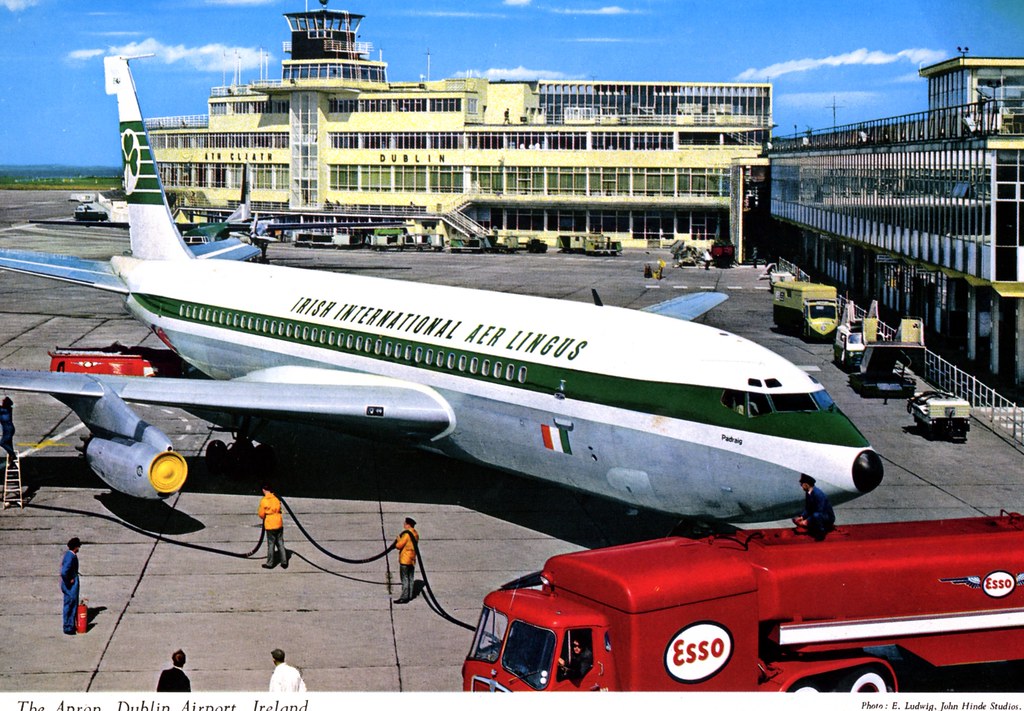


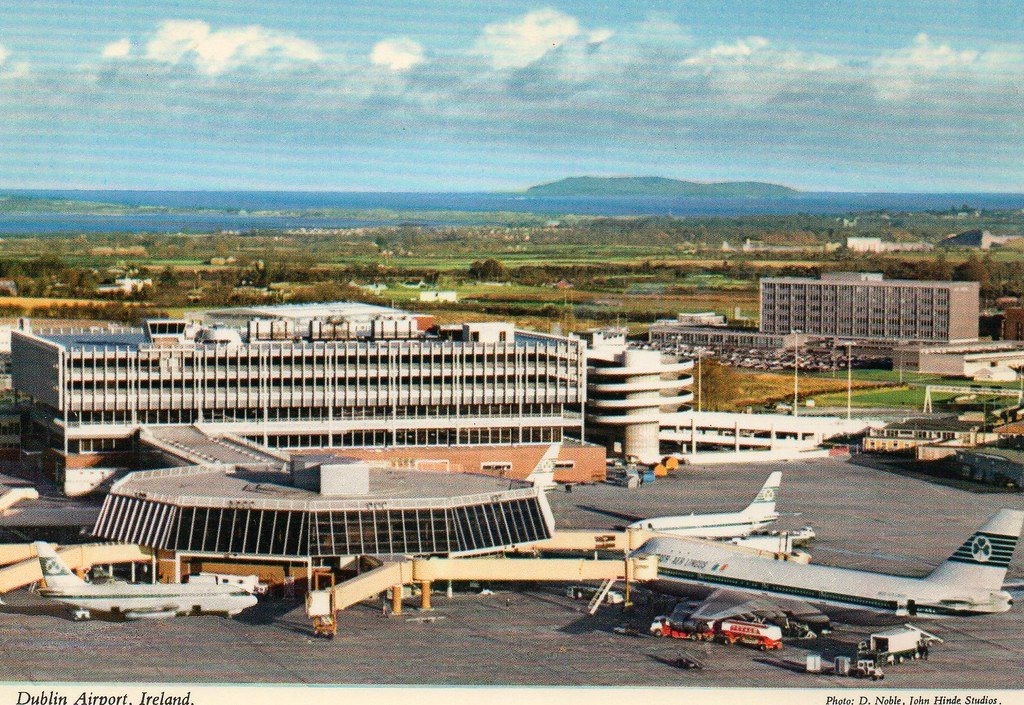


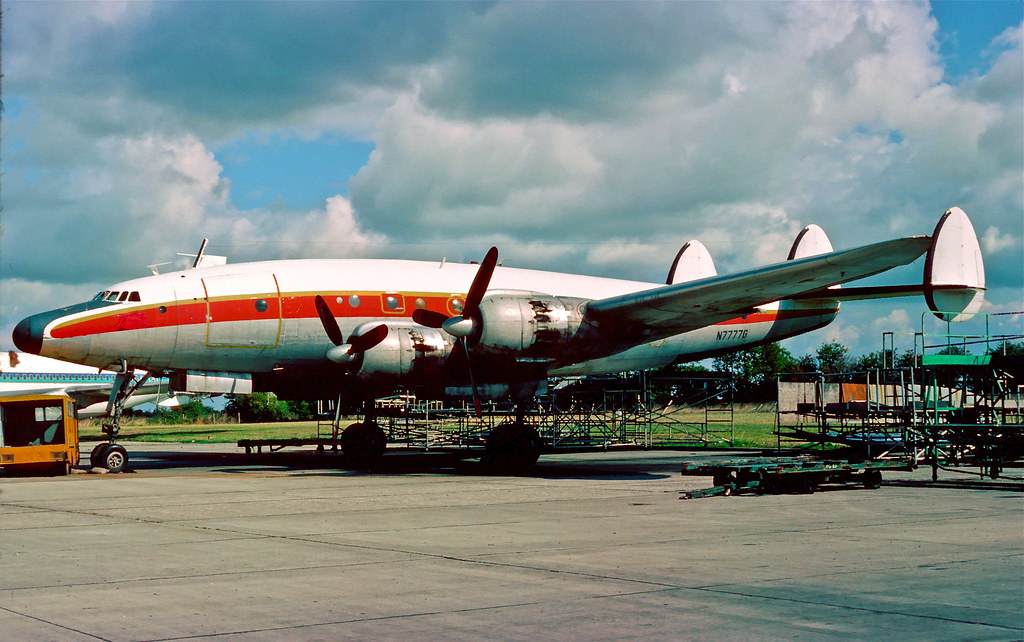

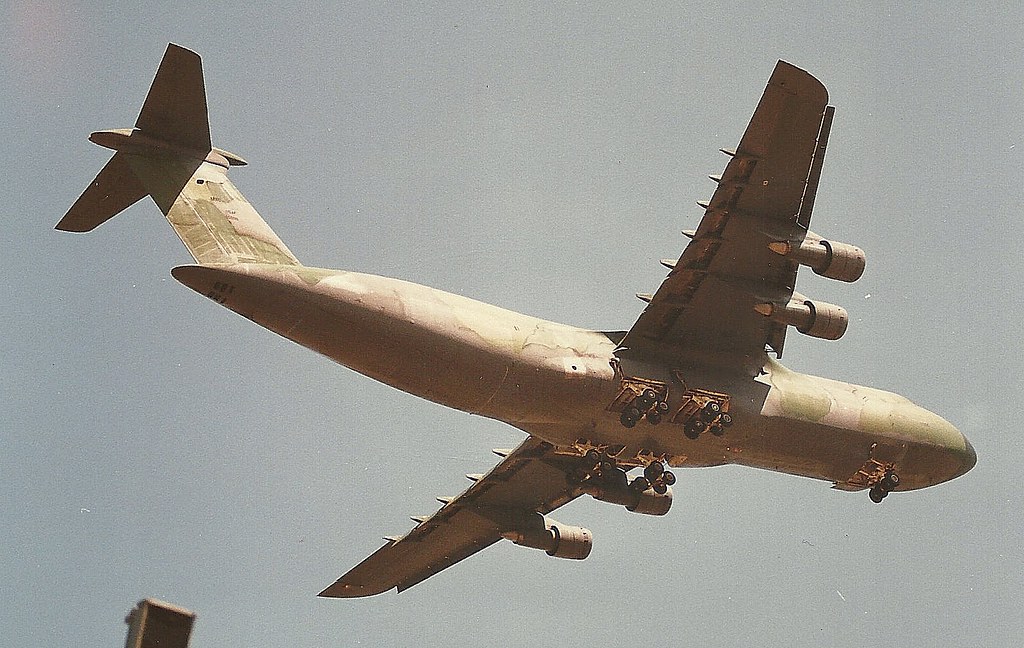

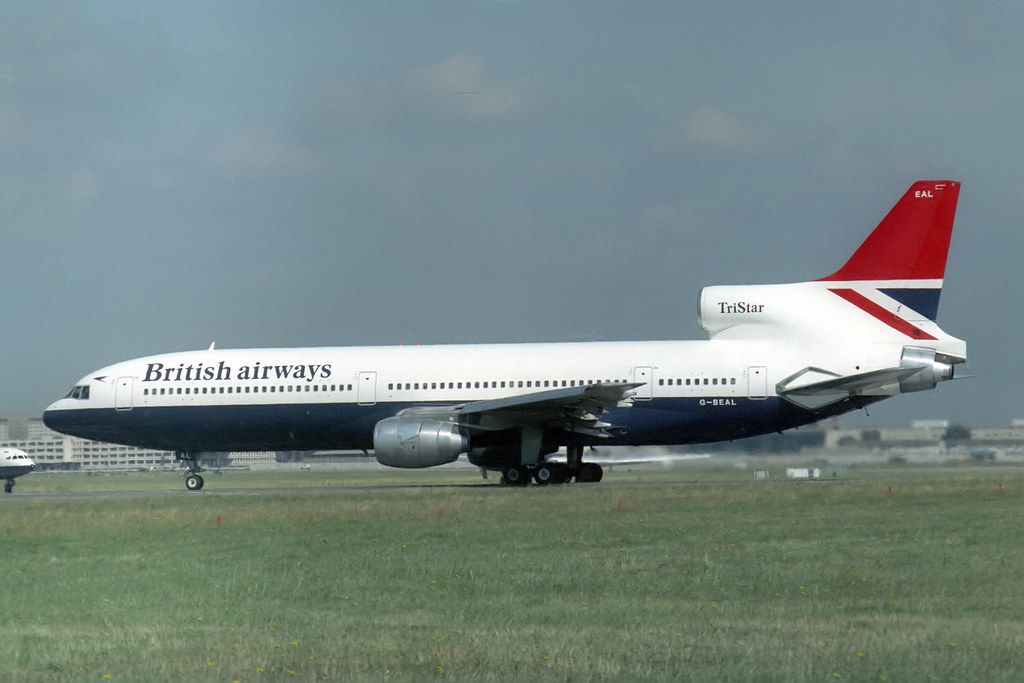



10 comments
Thank you Andrew ,what a wonderful time you must have had ! Are you still a spotter ?
I love Dublin myself ! My family are from Dublin ,my second home !
Thank you again !
Wonderfully evocative, a lovely heartfelt telling of the innocence of youth. It reminded me of cycling with a friend to Birmingham airport, twenty miles distant where I recall we saw for ourselves an early Aer Lingus Boeing 737!
Andrew, what a fantastic read this was and thanks for sharing your story. I started spotting about 9 and haven’t stopped more than 50 years later!
Great story indeed, I started being a true spotter with Civil Aircraft Markings in 1960 aged 12 at my home town airport at Belfast, and after leaving school, entered airline ops for some 47 years, in the UK, New Guinea and then Melbourne and Perth, where I retired in 2013.
At aged 73, I am still an avid spotter, so have been lucky enough to have spent my entire working ( shift work) life, ”hanging around aeroplanes”..how good is that.!
Took my first photos on a trans border trip to Dublin airport in July 1962, Viscounts, Friendships, DC-3s, Elizabethan and an Aer Lingus B720! Have accumulated 1352 flights in 3197 hours, just wonderful.
Andrew, you could have been writing about me. I was one of that ferol pack of young boys that you refer to. I had to laugh at the “Tony Soprano” godfather figure and am wondering who it was, I believe there were a few.
Thanks for sharing, its a great well written article.
What a fantastic story. Just like my early years in Jersey. I still remember the thrill of the Aer Lingus flights on a Saturday night 1-11’s and sometimes a 737. Many thanks for sharing.
One of the best insights I’ve ever read to those heady days of the 70’s, trying whatever to get info on exactly what was going on behind the scenes to assist in the hobby which just drove you to do it.
Marvellous!My dad left kerry to work for BOAC at LHR in the early 60’s.I mainly flew in to Cork going home for the 6 week free holiday in the summer.I have CAM from 1967-2021 complete.EI-AOK and EI-BAM were always at ORK,F-BCYX c-47 sometimes.IL-18,TU-104 vc-10 at LHR we thought it would last forever.Thanks to dad i flew jump seat to LAX ZK-NZP and no end of 707 and 747.If i had your ability with words i would try,the quqeens building at LHR had its own tony soprano-Robert William Sawyer who wrote a great book” notes from a small mind”I used to cycle from Castleisland to Farranfore to visit the airport,the lads told me to “cop on”
Merv Crowe here again…just to add a bit to my previous notes. I bought a SHORROCK VHF radio in 1965, used to lug it around with me along with the huge travel agents ABC airline guide book ( the size of the DOOMSDAY BOOK !) After school I would lie in my back garden in Belfast and watch seemingly endless streams of 707s and DC-8s on the trans Atlantic runs and tune in to hear Clipper, Speedbird, SAS, Lufthansa, KLM etc and then look up the flight number in my book to see the destination…great days indeed.
Andrew Cleary’s reminiscing was just wonderful to read, I was just like him and his pals at DUB and SNN.
Hello all, and thank you for these wonderful responses. I wrote this story in the middle of a ‘quarantine funk’ which led me dig out my old logs and scrap books and begin reminiscing with an old childhood friend about those more simple times. And while me writing about those experiences brought me back to a certain type of joy that I haven’t felt in these many years since, it is amazing to hear from each of you and how you shared much of the same wide-eyed wonder and freedom. There’s was something magical about it all back then that was much more than just about machines. It’s nice to see you all have similar memories. I’d love to hear more if you feel so inclined.
By the way, thank you to Matt for finding and adding the photos of various planes and Dublin Airport. Some of them are so coincident with my time there that there’s a decent chance that I knocked into the photographer while I was racing around the terminal.
Andrew